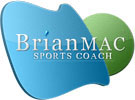

Sports Injuries First Aid
Harry Rose explains why first aid should be on every coach's radar.
In this day and age, it is almost unthinkable that anyone involved with sports at any level would not seriously consider first aid. Yet far too many athletes suffer the prolonged effects of injury due to a lack of proper medical care. It is time to change your thinking if you are a coach who doesn't draw correlations between first aid and sports injuries.
First aid should be something a coach thinks about before the start of a new season. It is something they should continue thinking about whenever they work with athletes. The reality is that proper first aid can mean the difference between a complete recovery and a devastating injury that could end an athlete's career.
Two Types of Injuries
Good first aid begins with a basic understanding of sports injuries. From a medical standpoint, acute and chronic injuries are divided into two categories. Knowing what you are looking at determines the type of first aid you offer. More often than not, acute injuries are the ones that demand the most serious attention.
Acute Injuries
Acute injuries are those that occur suddenly. Fractures are a good example. You might have two football players battling for the ball when one tackles the other too hard. A resulting broken leg would be an acute injury demanding immediate attention.
Chronic Injuries
By contrast, chronic injuries occur over time and are sometimes referred to as overuse injuries for this reason. One of the more recognised chronic injuries in baseball is the classic ulnar collateral ligament tear. Though the tear can occur suddenly, it is almost always the direct result of long-term overuse. The injury is one of the most common causes of Tommy John surgery among pitchers.
Both types of injuries (acute and chronic) call for different first aid protocols. Coaches must understand the types of injuries they are dealing with to render proper aid when necessary.
Identifying Injuries on the Field
First aid for sports injuries is rooted in identifying injuries as they occur. An ample supply of first aid kits is not very helpful if you are unfamiliar with the types of injuries your athletes are likely to suffer. In light of that, some of the more common acute injuries suffered by athletes include:
- Dislocations
- Bone fractures
- Head injuries
- Sprains and strains
- Contusions and abrasions.
Identifying a bone fracture tells a person administering first aid to immobilise the bone. Responders would use an air cast or splint to secure the broken bones before moving them. The athlete would then be immediately taken to a hospital. Depending on their response, shock treatment might also be necessary.
Dislocations are relatively easy to identify if you've had experience with them. Contusions and abrasions can be seen with the naked eye.
Head injuries, knee injuries, and muscle sprains are not easily identified. They often require examination by a medical professional.
Recommending the PRICE Protocol
The NHS recommends that everyone, including coaches and trainers, familiarise themselves with the PRICE protocol. It is designed to address both acute and chronic sprains and strains. Since such injuries are so common, sports coaches should implement the PRICE protocol.
PRICE rests on five strategies correlating to the individual letters of the word:
- Protection of the affected area to prevent further injury.
- Rest is intended to allow the injured limb to heal.
- Ice is applied at regular intervals to reduce inflammation.
- Compression is applied to limit future inflammation.
- Elevation, whenever possible, to reduce inflammation.
When viewed through the lens of first aid, the PRICE protocol can be invaluable for coaches, parents, and athletes. It can facilitate faster recovery from strains and sprains while reducing long-term injury risks.
The Value of First Aid Classes
This post could address a lot more about first aid and sports injuries. But moving on to one final point is appropriate in the interest of brevity. That point is the importance of taking first aid classes. As a coach tasked with looking out for your athletes on the field, first aid classes are a no-brainer.
Even an introductory first aid class to help you identify the most common injuries athletes suffer can go a long way. An introductory class can teach you how to treat cuts and abrasions. It can teach you how to identify and address broken bones. It can teach you how to prevent injured athletes from going into shock.
It is not possible to prevent all sports injuries. Things happen. But it is possible to mitigate the effects of both acute and chronic injuries. Giving attention to first aid principles is a good place to start. Understanding the types of injuries your athletes might experience, how to identify them, and how to treat them will ultimately be good for everyone you work with, on and off the field.
Page Reference
If you quote information from this page in your work, then the reference for this page is:
- ROSE, H (2021). Sports Injuries First Aid [WWW] Available from: https://www.brianmac.co.uk/articles/article626.htm [Accessed
About the Author
Harry Rose is a certified personal trainer with 10+ years of experience in the fitness industry. He is an expert in sports conditioning and strength training, among other disciplines.